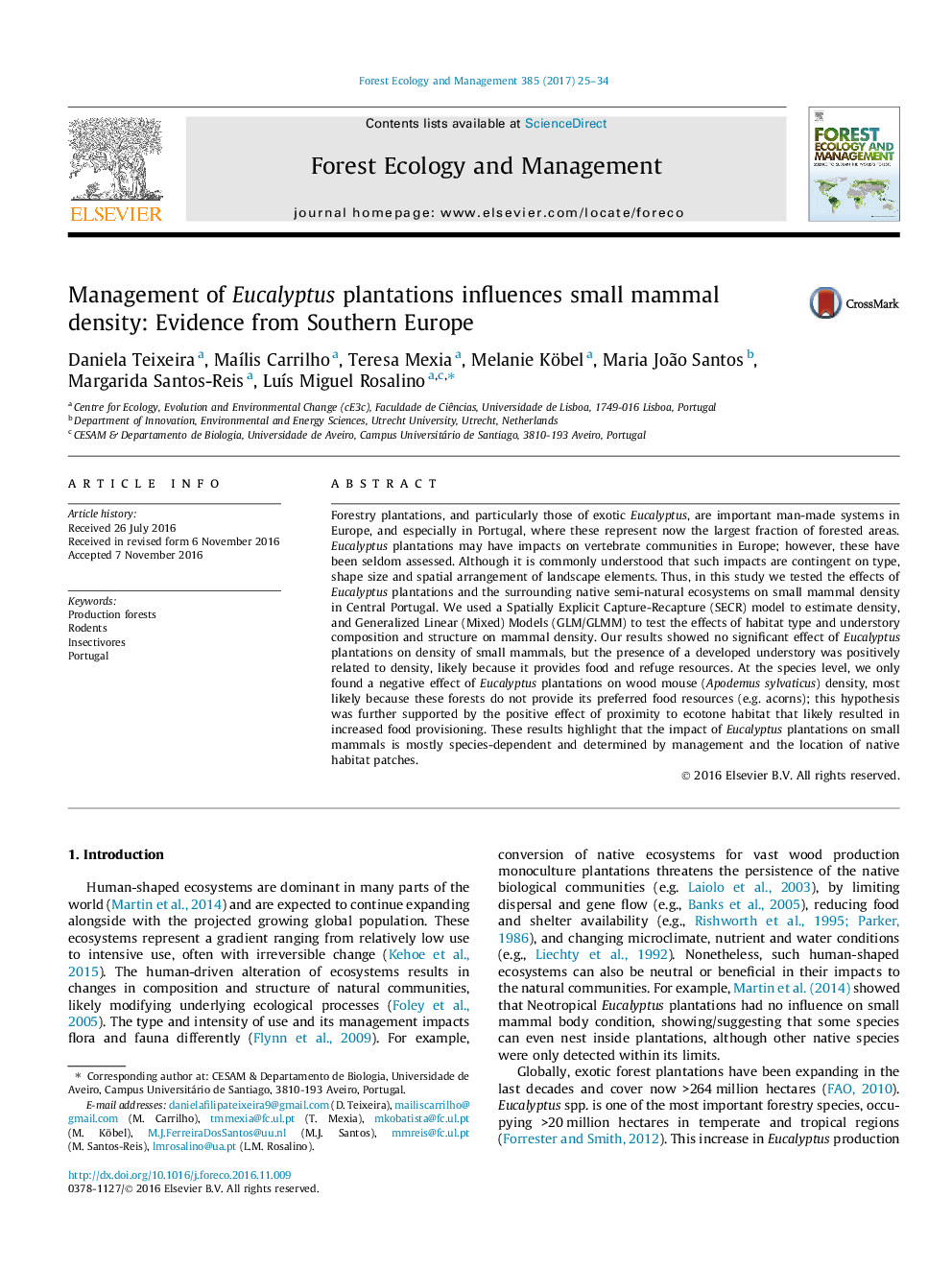| Article ID | Journal | Published Year | Pages | File Type |
|---|---|---|---|---|
| 4759562 | Forest Ecology and Management | 2017 | 10 Pages |
Abstract
Forestry plantations, and particularly those of exotic Eucalyptus, are important man-made systems in Europe, and especially in Portugal, where these represent now the largest fraction of forested areas. Eucalyptus plantations may have impacts on vertebrate communities in Europe; however, these have been seldom assessed. Although it is commonly understood that such impacts are contingent on type, shape size and spatial arrangement of landscape elements. Thus, in this study we tested the effects of Eucalyptus plantations and the surrounding native semi-natural ecosystems on small mammal density in Central Portugal. We used a Spatially Explicit Capture-Recapture (SECR) model to estimate density, and Generalized Linear (Mixed) Models (GLM/GLMM) to test the effects of habitat type and understory composition and structure on mammal density. Our results showed no significant effect of Eucalyptus plantations on density of small mammals, but the presence of a developed understory was positively related to density, likely because it provides food and refuge resources. At the species level, we only found a negative effect of Eucalyptus plantations on wood mouse (Apodemus sylvaticus) density, most likely because these forests do not provide its preferred food resources (e.g. acorns); this hypothesis was further supported by the positive effect of proximity to ecotone habitat that likely resulted in increased food provisioning. These results highlight that the impact of Eucalyptus plantations on small mammals is mostly species-dependent and determined by management and the location of native habitat patches.
Keywords
Related Topics
Life Sciences
Agricultural and Biological Sciences
Ecology, Evolution, Behavior and Systematics
Authors
Daniela Teixeira, MaÃlis Carrilho, Teresa Mexia, Melanie Köbel, Maria João Santos, Margarida Santos-Reis, LuÃs Miguel Rosalino,
